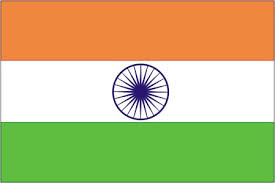ABOUT THE INSTITUTE
Indian agriculture is undergoing a significant transformation, driven by large-scale commercialization and diversification. Recent trends emphasize market-driven agri-business, focusing on enhancing farm profitability, value addition, and exports. To unlock its full potential, Indian agriculture must be approached as a modern business enterprise while prioritizing sustainable use of natural resources. The ICAR-Central Tobacco Research Institute, recently renamed as the ICAR-National Institute for Research on Commercial Agriculture (ICAR-NIRCA), has broadened its mandate by including high-value commercial crops such as Chilli, Turmeric, Ashwagandha, and Castor, besides tobacco, to support this vision.
The institute operates six research stations: three in Andhra Pradesh Jeelugumilli (FCV tobacco, Chilli), Guntur (FCV, Burley, HDBRG tobacco, Chilli, Turmeric), and Kandukur (FCV tobacco, Castor); and Vedasandur, Tamil Nadu (Chewing tobacco, Ashwagandha), Hunsur, Karnataka (FCV tobacco, Chilli, Turmeric), and Dinhata, West Bengal (Hookah tobacco, Chilli, Turmeric). Besides this, the institute also coordinates the All-India Network Project on Tobacco (AINPT)and has two KVKs located at Kalavacharla and Kandukur (Andhra Pradesh).
To strengthen India's global standing in high-value commercial crops and meet rising export demand, the ICAR-National Institute for Research on Commercial Agriculture (ICAR-NIRCA) focuses on enhancing competitiveness through cost efficiency, quality improvement, and branding via targeted research-for-development (R4D). The institute's expanded mandate emphasizes agro-processing, value addition, and increasing farm profitability and farmers’ income. ICAR-NIRCA drives agricultural exports by strengthening value chain systems, playing a key role in advancing sustainable, innovative, and economically vibrant commercial agriculture toward the vision of a “Vikasit Bharat-2047” (Developed India).
India is the leading producer of several high-value commercial crops in the world. The high-value commercial crops were selected based on their potential to generate high returns for farmers, greater scope for post-harvest processing and value addition, and tremendous export potential to generate foreign exchange revenue to the national economy. Moreover, India enjoys a pre-eminent position in the global production and exports of selected high-value commercial crops viz., chilli, turmeric, and castor. Among the countries in the World, India ranks first in the production of chilli, turmeric, and castor. India is one of the fastest-growing major economies, currently ranked as the world’s sixth-largest economy and potential to achieve a US$5 trillion economy in a couple of years. In this context, agriculture and allied sectors will play a pivotal role by bringing a 1 trillion-dollar economy. Therefore, harnessing the untapped potential of high-value commercial crops is a viable option in the total agro-economic system. India, being the largest producer and exporter of several high-value commercial crops such as chilli, turmeric, castor, and ashwagandha, has a very low export orientation of these crops on a global scale is very low, which needs to be accelerated to enable India as a powerhouse of agri-exporters in the international market.
Thrust areas of the Institute
- Commercial Crop Improvement
- Crop Production Management in Commercial Agriculture
- Post-Harvest Produce Management
- Extension and Market Intelligence
ICAR-NIRCA collaborates with the following institutions through All India Coordinated Research Projects for high-value crops:
- ICAR-Indian Institute of Vegetable Research, Varanasi: Chilli lines for value addition
- ICAR-Indian Institute of Spices Research, Kozhikode, Kerala: Turmeric phytochemicals and high-value compounds
- ICAR-Indian Institute of Oilseed Research, Hyderabad: Rabi castor crop in SLS, Andhra Pradesh
- ICAR-National Bureau of Agricultural Insect Resources, Bengaluru: Coordinated trials on biological control
- ICAR-Indian Agricultural Research Institute, New Delhi: Coordinated trials on nematodes
Chilli
- India leads global chilli production with 25.96 lakh tons (47% share) but exports only 6.01 lakh tons (23%), earning Rs. 12,492 crores. India's chilli exports are predominantly unprocessed (81%), indicating low export orientation, compared to China (65% processed) and Spain (nearly 90% processed).
Turmeric
- India leads global turmeric production, accounting for 82% (10.74 lakh tons) with a diverse range of 40–45 varieties, offering significant scope for innovation. Currently, turmeric exports amount to 1.62 lakh tons, generating Rs. 1,875 crores, with only 0.49 lakh tons being processed. The global demand for Indian turmeric is rising due to its exceptional quality, therapeutic benefits from curcumin content (ranging from 3% to 12%), and diverse varieties (Alleppey, Nizamabad, Sangli, and Rajapuri), which offer a spectrum of flavors and aromas to meet the varied preferences of international buyers.
Ashwagandha
- India stands as the leading global producer of Ashwagandha with cultivation concentrated in Madhya Pradesh and Rajasthan. The Neemuch market in Madhya Pradesh serves as a key export hub, supplying Ashwagandha to international destinations including the USA, Canada, and the Czech Republic. The Ayurvedic industry in India has been growing at 17% CAGR. The size of the industry was $3 billion in 2014, it has grown to $24 billion in 2024.
Castor
- India holds a virtual monopoly in global castor production and exports, with castor oil exports totaling 6.46 lakh tones and generating approximately ₹7,805 crore in foreign exchange. However, the country imports nearly ₹9,000 crore worth of castor oil derivatives, highlighting a critical gap in domestic value addition. Castor oil derivatives are widely utilized across various industrial sectors, including the production of paints, varnishes, resins, plasticizers, and more. The market for castor oil-based products is expanding, with increasing demand for specialty chemicals such as fatty alcohols (e.g., 2-octanol), aldehydes, amyl cinnamic aldehyde, γ-Deca lactone, and ethyl methyl phenyl glycinate.
 GOVERNMENT OF INDIA
GOVERNMENT OF INDIA  || MINISTRY OF AGRICULTURE AND FARMER'S WELFARE
|| MINISTRY OF AGRICULTURE AND FARMER'S WELFARE






